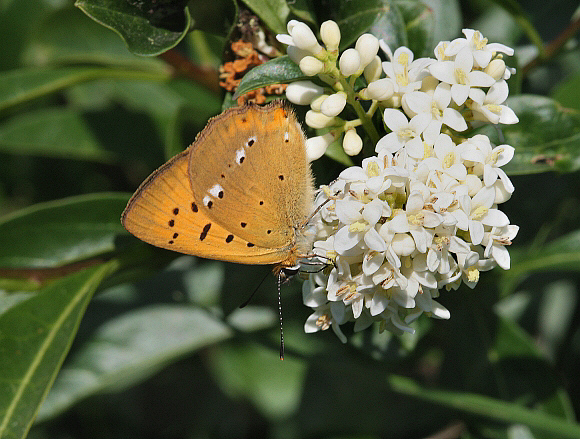 Scarce Copper Lycaena virgaureae, Aggtelek, Hungary – Peter Bruce-Jones
Scarce Copper Lycaena virgaureae, Aggtelek, Hungary – Peter Bruce-Jones
Introduction
There are over 70 species of Copper butterfly in the genus Lycaena, the vast majority of which are found in the Holarctic region ( North America, Europe and the part of Asia north of the Himalayas ). There are also however at least 5 species in Africa including the Small Copper Lycaena phlaeas, and several in the Oriental region. Additionally there is a single species in Papua New Guinea, and no less than 4 in New Zealand. Australia and South America each have the great misfortune to have not even a single species of this exquisite genus of butterflies.
All Lycaena species are small and of similar shape, and all but a tiny handful have a shimmering fiery copper sheen on their uppersides. Some like virgaureae are almost devoid of markings, while others have irregular or linear bands of dark spots on the forewings, and in some species also on the hindwings.
There are 12 species in Europe, of which virgaureae is certainly not the scarcest, despite its rather misleading common name, which refers to the fact that the species has been dubiously recorded in Britain as a great rarity – almost certainly due to it being confused with the similar Large Copper.
In Europe virgaureae is a quite common species, found in central Spain, the Pyrenees, the Massif Central of France, and from the western foothills of the Alps to Greece and Turkey. It also occurs across most of temperate ( Holarctic ) Asia, reaching east as far as Mongolia.

Scarce Copper Lycaena virgaureae, Aggtelek, Hungary – Peter Bruce-Jones
Habitats
This species is found in sheltered and dampish areas of flowery grassland including sub-alpine hay meadows, boggy woodland clearings and alpine pastures, at elevations between about 600-2000m.
Lifecycle
The usual larval foodplant is common sorrel Rumex acetosa ( Polygonaceae ), although other Rumex species are sometimes used.
The egg is off-white in colour, dome shaped, and covered in a coarse network of deep hexagonal pits. It is laid singly or in two’s or three’s on the stems or leaves of the foodplant. Some eggs hatch within a few days of being laid, but others overwinter with the fully developed larva within.
The caterpillar when fully grown is green, woodlouse-shaped and slightly hairy. It feeds nocturnally.
The chrysalis is of the typical plump, rounded, featureless Lycaenid shape, and pale green in colour, dappled with black spots on the abdomen, and with tiny black flecks on the wing cases.
Adult behaviour
The butterflies are very active in sunny conditions, typically spending 2 or 3 minutes nectaring at a particular clover, knapweed, scabious or daisy flower before darting very quickly to another plant. When feeding they hold their wings either erect, or at a 45� angle.
Males perch on bushes or flowerheads to await passing females, and aggressively attack any other males which impinge onto their territory.
In late afternoon, or in hazy sunshine they habitually sit near the top of grass stems or on the upper leaves of herbaceous plants, basking with wings held half open, while adopting the head-downward posture that is commonly used by Blues and other Coppers.
Just before dusk they tend to gather at sheltered spots, roosting in one’s and two’s on dead flowerheads, on which they rest facing head downward.
